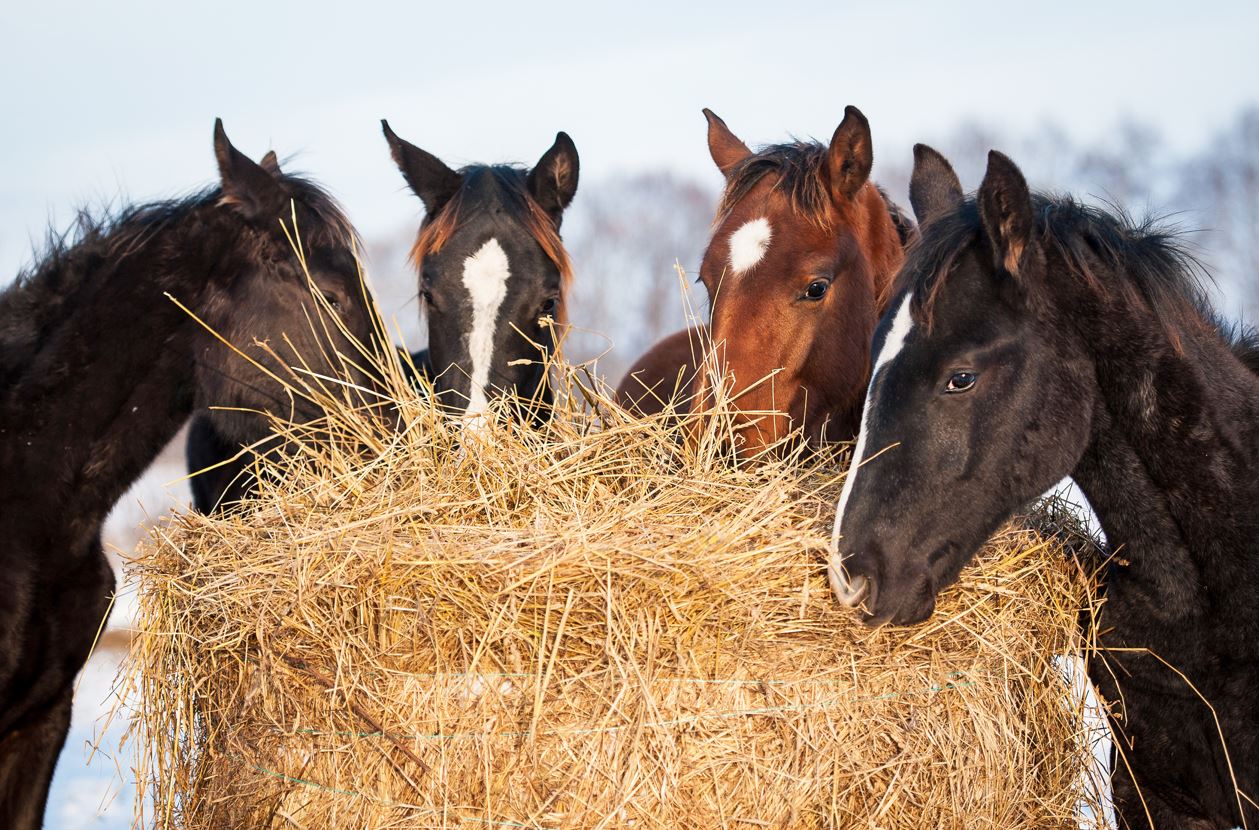Horses are monogastric herbivores. Their digestive health is directly related to the quality and quantity of hay available. It is therefore important to ensure that you give your horse the optimal amount of hay, but that it is adapted to his environment. You also need to make sure it is of good quality and properly stored.
Adapting the amount of hay for your horse to its environment
In their natural state, horses have access to grass for food all the time. They can graze up to 50 kg per day, over a period of about 12 hours. In a captive setting, it is essential to be able to replicate their lifestyle as much as possible. Therefore, ideally, your horse should be offered hay at will. He will regulate himself and choose the time he spends on food. If this option is not possible, you will have to give him enough to meet his food needs.
For horses living in a stall on straw bedding, a minimum of 1-1.5 kg of hay is required per 100 kg of body weight. Horses on artificial bedding, for example due to respiratory problems, should receive an additional 0.5 kg of hay per 100 kg body weight to cover total dry matter requirements. Straw cellulose is not as easily digested (lignin) as grassland hay (true cellulose). Horses fed hay from quality pasture eat less straw, thus avoiding digestion problems.
For horses living in pasture, hay should be introduced when there is no longer enough grass.
What should be fed first: pellets or horse hay?
The order of feeding should always be the same: water first, then hay and finally concentrated feed. There are 3 specific reasons for this order:
- First, it is a matter of “digestive efficiency”. Since the horse has a small stomach, it empties regularly during the meal. Only the last fraction of the meal is better assimilated because it remains longer in the horse’s stomach. As concentrates contain a high energy value, it is interesting that these foods stay longer in the horse’s stomach. However, if hay is available to your horse at will, it often happens that he goes to eat it after his ration of concentrates.
- Hay is also preferable before the concentrate ration for horses with gastric problems (ulcers, gastritis, etc.) This is often the case when their ration is based on cereals or feed with too high a concentration of cereals (starch). To mitigate this, chewing the feed leads to a significant production of saliva that will be able to play the role of an acid-base buffer in the stomach.
- Finally, as we have just seen, the forage triggers the horse’s digestion thanks to the high production of saliva generated by chewing. This will allow him to better digest (assimilate) his ration.
The quality and storage of hay
Hay harvested late will tend to be woody and less digestible. We therefore advise you to store it in a dry and well ventilated place. Never feed your horses moldy or dusty hay, nor hay contaminated by animal excrement (cats, mice, etc.).



